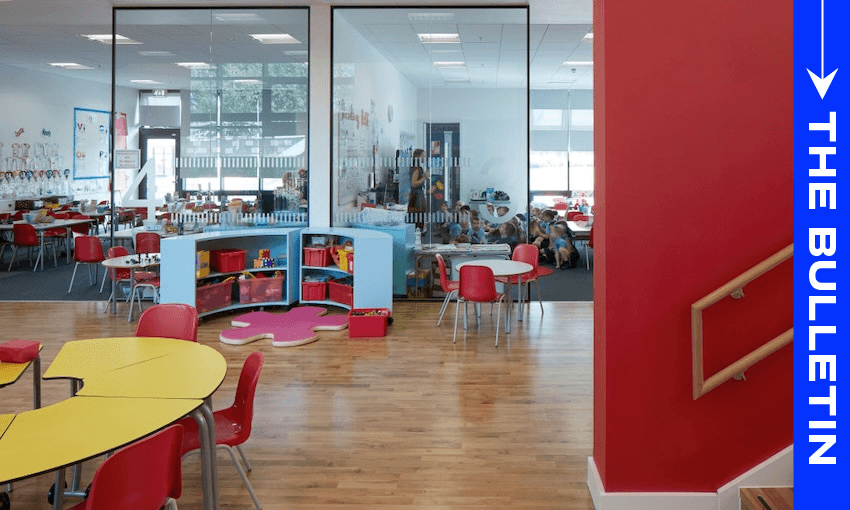Increasingly loud demands that councils rein in spending have made for a fractious week between ministers and mayors, writes Catherine McGregor in today’s extract from The Bulletin.
To receive The Bulletin in full each weekday, sign up here.
Ministers and mayors air out their differences
The relationship between central and local government was extra prickly this week, with a fresh suite of reforms tabled in Wellington and ministers getting a somewhat frosty reception in Christchurch at the Local Government New Zealand conference. The Local Government (System Improvements) Amendment Bill, which passed its first reading last night, will remove councils’ legal responsibility to consider the “four wellbeings” – social, cultural, environmental and economic – when making decisions. Instead, councils will be legally obliged to prioritise so-called “core services” like water, roads and rubbish.
Opening the conference, the prime minister pitched the changes as a return to basics, saying ratepayers wanted councils to “[prioritise] pipes over vanity projects”. But among the mayors gathered in Christchurch, frustration was palpable at the expectation that they somehow, as Newsroom’s David Wiliams put it, “achieve the triumvirate: upgrading infrastructure, holding down rates, and keeping debt in check”. Clutha mayor Bryan Cadogan said ministers refuse to admit they’re demanding the impossible. “The Government knows it, we know it, but we just keep on getting this.”
Councils fed up with policy whiplash
That frustration is compounded by the sense that councils are forever adapting to the whims of central government. The four wellbeings, for instance, have now been added and removed from the Local Government Act four times since 2002 – inserted twice by Labour governments, stripped out by National. “Every time we have an election, there’s a flip-flop,” said LGNZ president Sam Broughton. As Shanti Mathias reports this morning in The Spinoff, he and others also pushed back at the government’s suggestion that councils are blowing money on “nice-to-haves” like bike lanes and “fancy toilets”. In his own district of Selwyn, Broughton said, 80% of spending goes to key infrastructure like pipes and roads, with the rest funding services that communities still see as essential.
Coalition partners not convinced on rate caps
One of the other changes introduced in the new bill is benchmarking – mandatory, comparative performance reporting on council spending, rates, debt and outcomes. While this information is already publicly available, the law will now require councils to collate it into reports. Deputy PM David Seymour is a fan: he told the Christchurch conference that “some healthy competition between councils is long overdue”. He also cheered the removal of the wellbeing requirements, which he dubbed the Puppy Dogs and Ice Cream Bill when they were proposed by Labour, for the second time, in 2017.
However Seymour later expressed reservations about local government minister Simon Watts’ proposed cap on rates increases. “Don’t cap your income until you’ve got your spending under control,” he warned. NZ First leader Winston Peters was even blunter, RNZ’s Lillian Hanly reports. “Doctor, heal thyself,” Peters opined, arguing that central government’s own spending record left it in no position to preach to others about fiscal restraint.
Tikanga or ‘red tape’?
Seymour’s speech also ignited controversy with his attack on what he called “ceremonial chanting” in the consenting process – a reference to clauses in resource consents requiring karakia or other tikanga Māori. As Māni Dunlop reports in Te Ao Māori News, the line was in his prepared remarks but not in the speech he delivered at the conference. However Seymour doubled down later that day, claiming that developers were backed into a corner over karakia, believing they had to allow their use to avoid controversy. The comments brought Seymour his second rebuke of the week from Peters: “Why am I responding to what David Seymour doesn’t know? Excuse me,” said the NZ First leader, adding that he had spent much of his career defending the “right protocol”. Karakia, he said, are “appropriate when used correctly”.
Writing in The Spinoff, Liam Rātana notes that such clauses are typically inserted by mutual agreement to build respectful relationships with mana whenua, and argues that Seymour’s complaints are based on misunderstandings of both tikanga and how consent conditions actually work. “While highlighting these clauses as unnecessary ‘red tape’ and ‘roadblocks’, Seymour says his changes will put ‘power back with communities’,” Liam writes. “I wonder which communities he’s talking about?”

![A law change introduced to parliament this week is being pitched as a return to basics, with the PM saying ratepayers want councils to ‘[prioritise] pipes over vanity projects’. (Image: The Spinoff)](https://images.thespinoff.co.nz/1/2025/07/Bulletin-180725.jpg?w=1290)

